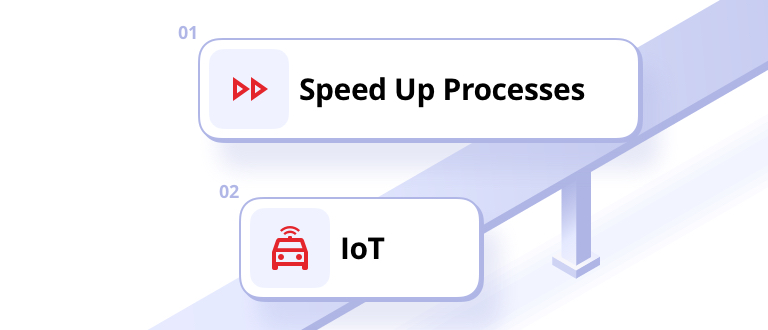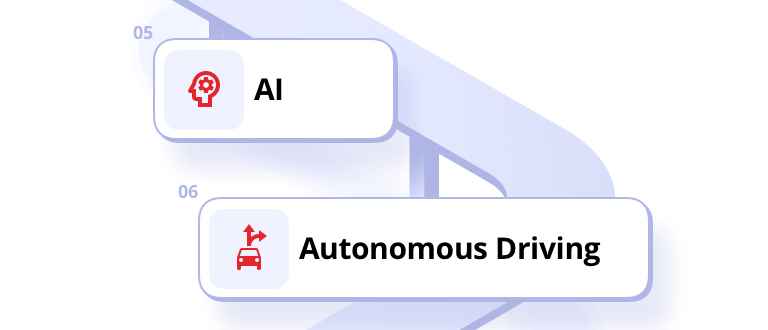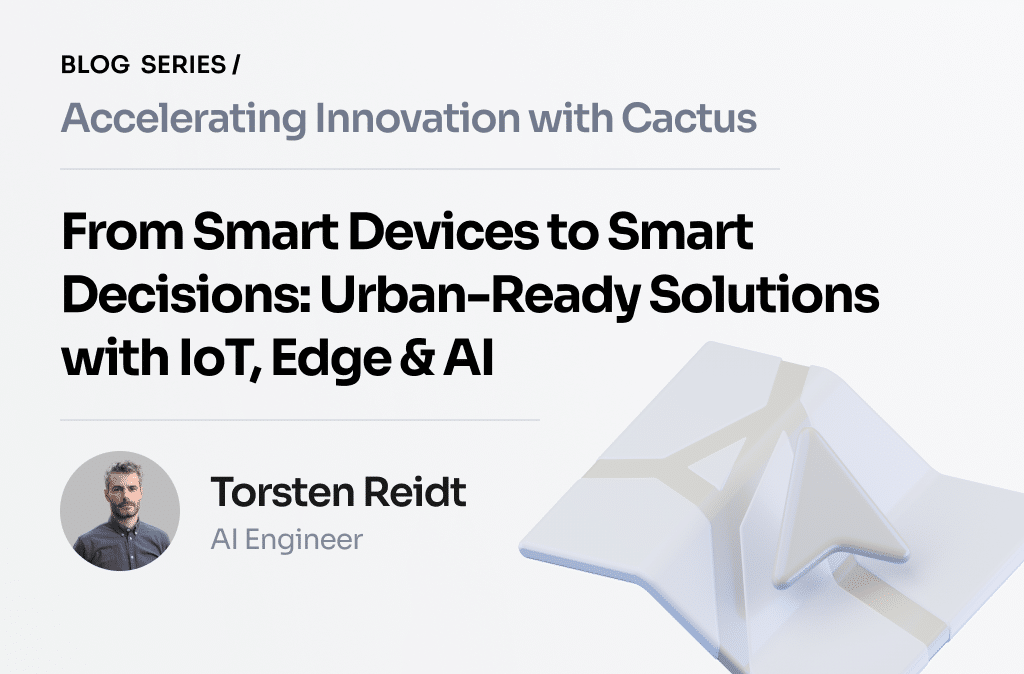Environmentally friendly, connected, automated, and personalized commutes are the way of the future and represent some of the trends in mobility tech expected over the next few years. In addition, manufacturers are exploring ways to produce intelligent autonomous vehicles to keep on top of mobility tech industry trends. Thus, developing future vehicles necessitates cutting-edge technology and approaches.
Digitalization has rapidly become the norm in the transportation industry, and it is crucial in safeguarding revenue. Following the lead of cities such as Paris and London, many large cities have started using digital ticketing platforms to improve their operational efficiency. However, more than simply a collection of technical know-how is required to implement intelligent solutions that maintain passenger safety. You also need a business partner who thoroughly understands these trends in the mobility industry and helps in making your business thrive so that you can change when the situation calls for it.
Mobility Tech Trends To Watch Out For
To ensure that you are on top of your game in the transportation sector, here are some trends in mobility tech that continue to unfold:
Speed Up Processes
Public transportation operations, such as scheduling and restructuring transportation services, will speed up processes as 2021 continues. This flexibility and agility will be necessary to change services or give new information to the public on an as-needed basis. That is in response to pandemic conditions affecting public transportation utilization.
Historically, public transportation has been slow to modify service levels and provide new real-time information. However, with the introduction and wide adaptation of digital innovations, such as artificial intelligence (AI) and machine learning (ML), the studies that drive these breakthroughs may be completed fast. Thus, operational changes can be implemented almost immediately.
IoT
Modern vehicles interact with each other and physical environments like a central hub using cellular, WiFi, and satellite connections. Previously, IoT was mainly employed for entertainment and convenience, but the focus has shifted to maintenance and safety. Several methods enable connectivity in mobility tech, including built-in connectivity with embedded OEM solutions or brought-in connectivity with smartphone-based apps.
Insurance, driving safety, predictive maintenance, and fleet management are just a few of the applications that might benefit from IoT connectivity. Vehicle data are sharing benefits not only for the individual customer but the entire mobility ecosystem.

Electric Mobility
Advances in electric drive technologies, EV charging, and infrastructure, as well as data analytics and security, will noticeably accelerate. That is also to promote sustainable transportation and accelerate the rise of e-mobility. However, despite the obvious environmental advantages of electric vehicles, there are still several barriers to their adoption.
In response, startups all across the world are working on ways to make EVs more widely adopted. They do this by delivering cost-effective solutions infrastructure for charging and batteries. Simultaneously, new businesses are developing electric vehicles of various sizes to expedite the logistics sector and minimize hazardous emissions.
Mobility-as-a-Service
A user-centric approach to mobility is combining numerous means of transportation into a single mobility service. Mobility-as-a-Service provides value-added services by adopting and maintaining a user-centric strategy through the use of a single application. Customers use a single payment channel rather than several ticketing and payment activities, making planning more straightforward and efficient.
One of the advantages of MaaS is that it presents new business models that utilize alternative transportation options. It can also relieve congestion and decrease capacity limits. However, despite all of the benefits that MaaS offers, it is the fact that it is pretty easy to plan a route and process payments that makes this mobility trend an emergent one.

AI
AI is becoming more versatile and valuable as machine learning (ML) algorithms are refined. Robotic automation and superior data analytics enable AI to build new mobility applications. These autonomous driving functions, image recognition, predictive maintenance, and in-vehicle experiences are all based on AI and will assist self-driving vehicles. These approaches aid in self-driving automobiles, fleet management, and helping drivers to enhance safety and efficiency. Automated AI is used in manufacturing to speed up output and lower costs. AI is also part of the industry’s top mobility trends.
Autonomous Driving
There have been many years’ worth of plans for autonomous vehicles. However, their deadline to be completely self-driving keeps getting pushed back, as testing and fine-tuning algorithms is still a challenge. Nevertheless, despite the disappointments, investors see a profitable future for driverless vehicles.
Cars that can drive without human intervention or supervision are still at least a few years away, and automobiles that can run without human supervision could take a decade or more to create. Therefore, features dependent on lesser levels of autonomy, such as ADAS and active safety systems, will continue to expand in the auto industry. That is such until their levels of autonomy match or exceed those found in a human driver. On the other hand, Ford still predicts that by 2022, they will be ready to bring their self-driving cars to the market. That means we should expect to see a lot more innovation surrounding autonomous driving technology in 2021.

Micromobility
More and more people worldwide are adopting micromobility because of the convenience and how it reduces harmful impacts on the environment. It is a highly effective approach for reducing automotive greenhouse gas emissions and for improving transportation access. Fuel-efficient and non-fossil-fuel-based energy are other advantages of micromobility technologies. Traditionally well-received for urban commutes, cycling helps tackle two significant challenges: first- and last-mile commuting and delivery. As e-bikes, which are much lighter and faster than conventional bicycles, have more city-dwellers opting for a more convenient mode of everyday commuting, more people are purchasing e-bikes.
Smart Roads
Collecting a tremendous amount of data with modern traffic sensors empowers wiser judgments for better traffic management. It is generally agreed that constructing smart cities starts with building smart infrastructure. Not only does it extend to smart roads, automated parking, and IoT, but it also encompasses all of the numerous road signs and traffic lights which guide drivers and self-driving vehicles. Driving systems based on AI utilize various modern sensors to handle their surroundings and come to conclusions based on data.
A wide range of intelligent road-conditioning technologies is integrated into roadways. These capabilities include enhancing visibility, generating electricity, sending information to autonomous and connected vehicles, monitoring road conditions, and more. Additionally, data analysis can be used to identify areas that require care around the city. For example, this attention might reduce wear and tear on roads of a town by half or be related to a neighborhood that needs traffic lights or a crosswalk.

Final Thoughts
It is vital to comprehend these patterns, as the mobility space will soon release a great deal of untapped potential. Mobility-transforming activities are ongoing. So you can expect that the impact of digitalization on the mobility industry will continue to be significant in 2021.








